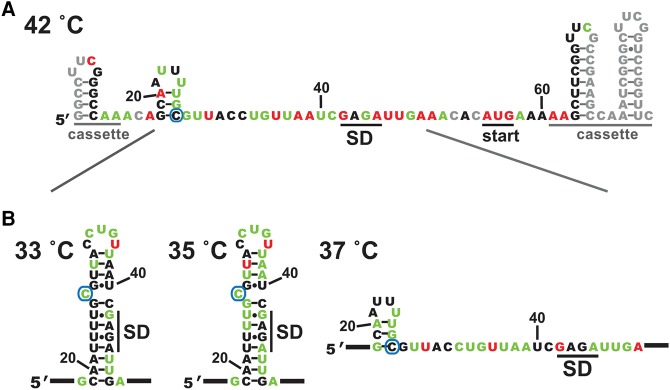FIGURE 4.
Incorporation of SHAPE constraints into structural predictions supports a cooperative transition. (A) SHAPE-constrained secondary structure of the htrA thermometer at 42°C. Shown is the lowest energy structure predicted using RNAstructure, with incorporation of SHAPE values as pseudo-free energy restraints. The C that forms the single-nucleotide bulge in the folded thermometer is circled. Diagonal lines indicate the region expanded in B below. Coloring as in Figure 2. (B) SHAPE-constrained secondary structure predicted at temperatures bracketing the structural transition (33°C, 35°C, 37°C), focusing in on the thermometer hairpin sequence. No structural change was predicted in the flanking cassette regions over a temperature range from 20°C to 56°C. SHAPE-constrained secondary structures reveal that the alternative stem seen here at 37°C and 42°C melts out between 45°C and 50°C.

